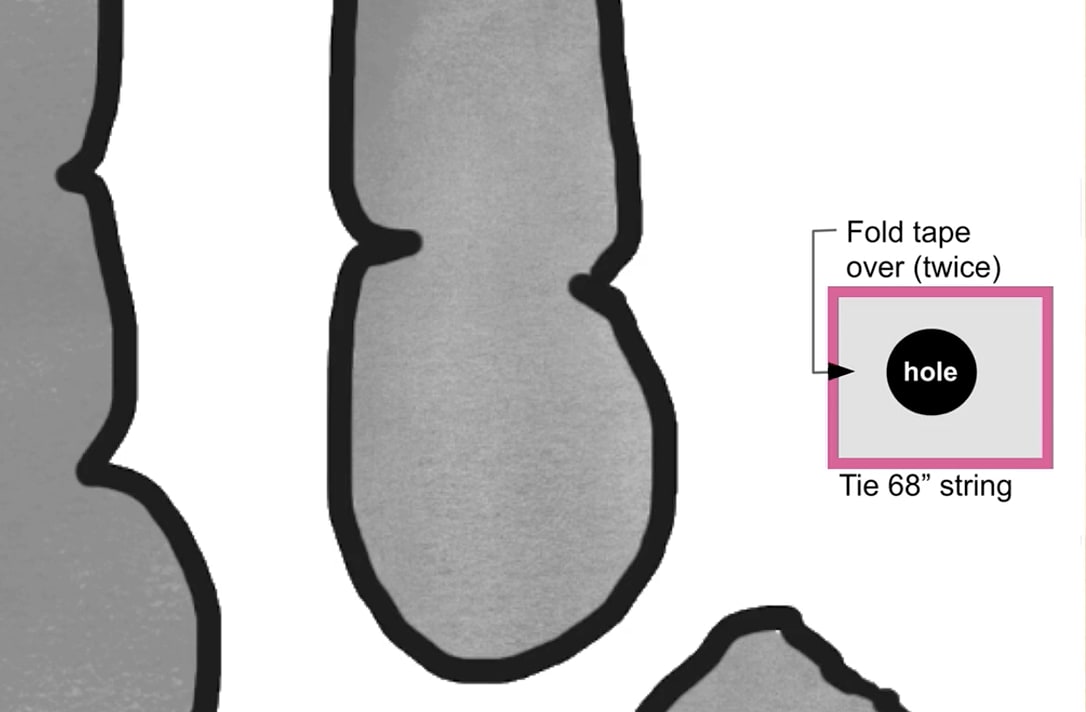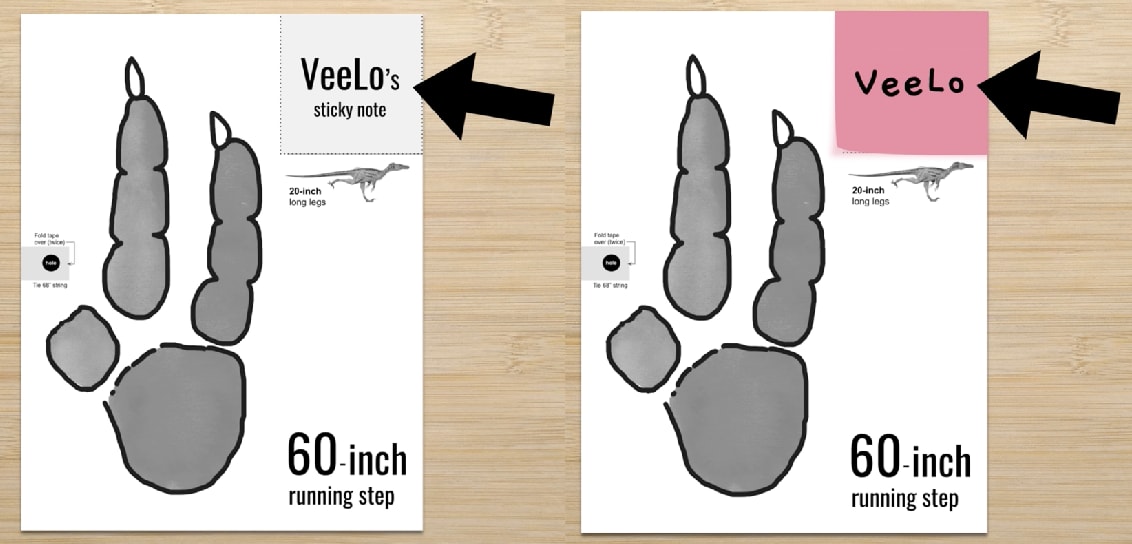
¿Es posible correr más rápido que un dinosaurio?

CONVERSEMOS: ¿Qué puedes aprender sobre estos animales con solo ver sus huellas? (Si quieres una pista, fíjate en la siguiente página).
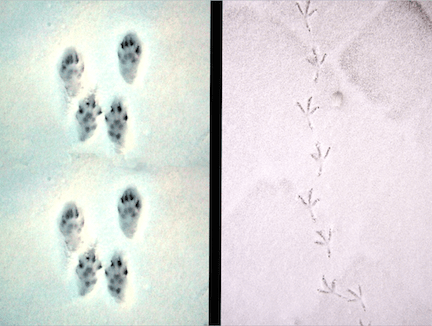
Pista: ¿Puedes ver en cuántas patas camina el animal (en dos o en cuatro)? ¿Cuántos dedos tiene? ¿Qué forma tienen sus patas?
Nosotros notamos esto:
El animal en la izquierda tiene 5 dedos; el de la derecha tiene 4. El animal en la izquierda camina en cuatro patas (¡es una ardilla!). El animal de la derecha camina en dos patas (¡es un pájaro!).


CONVERSEMOS 1 de 3: ¿Qué avestruz crees que iba más rápido? ¿Cómo lo sabes?
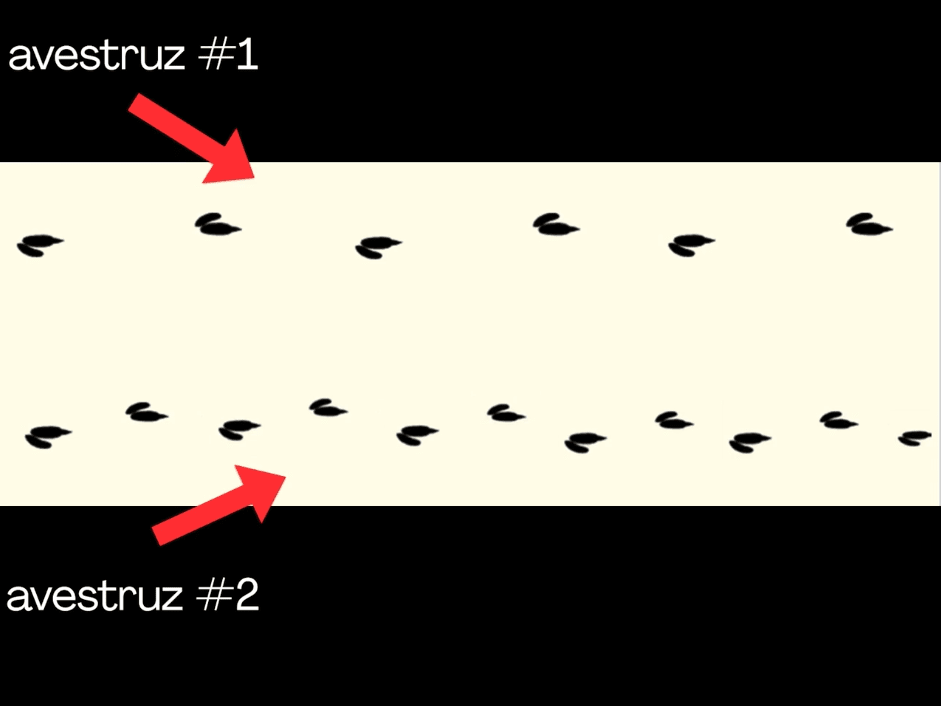
CONVERSEMOS 2 de 3: Observa esta imagen y decide: ¿En qué parte iba caminando Pat? ¿En qué parte iba corriendo? ¿Por qué crees eso? (Encuentra la respuesta en la siguiente página).
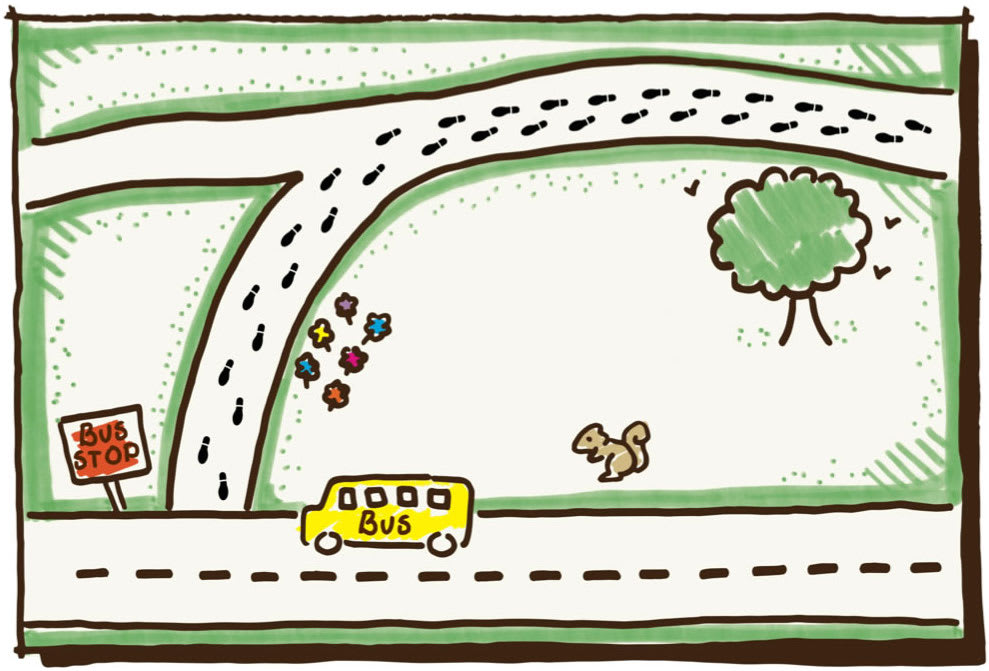
Respuesta:
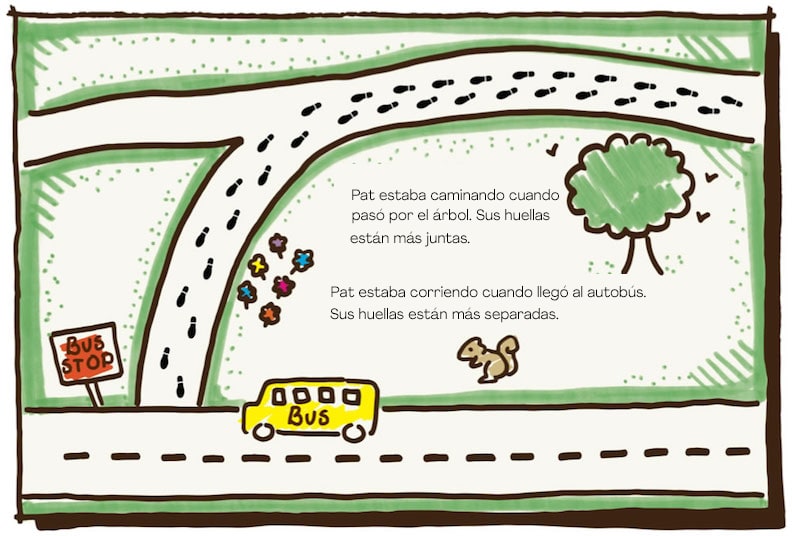
CONVERSEMOS 3 de 3:
Los dinosaurios se murieron hace muchos años. No puedes hacer carreras contra uno. ¿Cómo podrías averiguar si puedes correr más rápido que un dinosaurio?
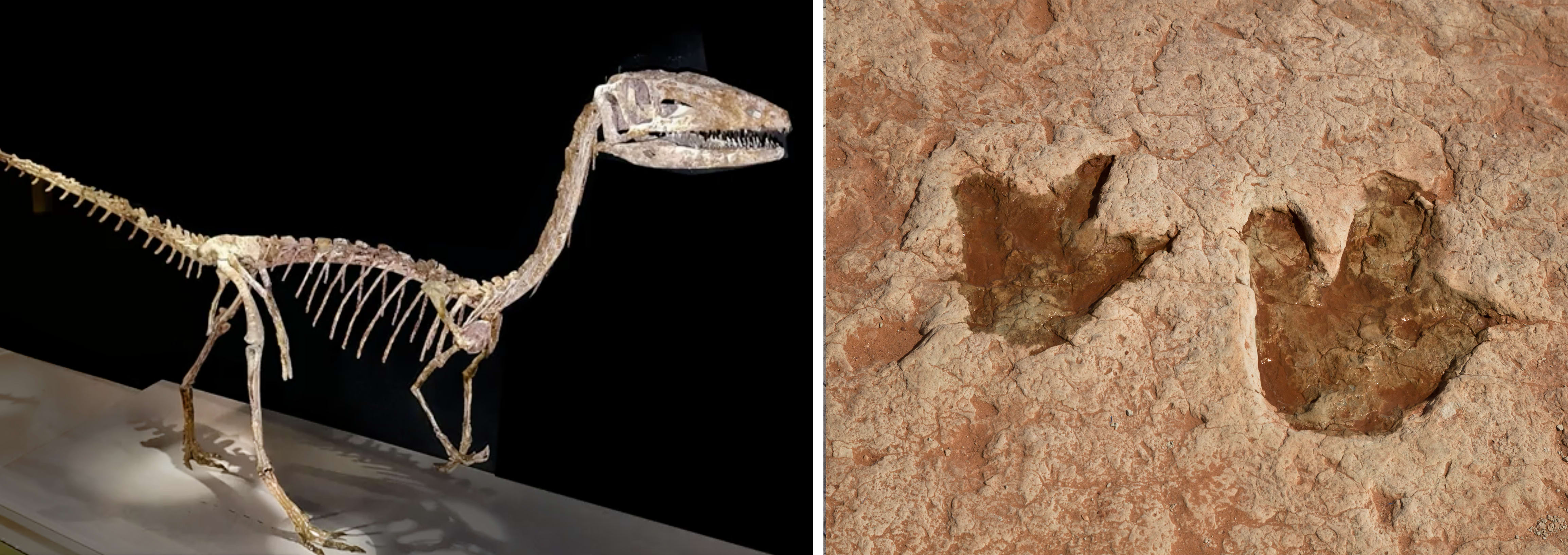



01/11

02/11

03/11
de tu compañero o compañera en la notita, y pégala en tu hoja de
trabajo.

04/11
corredor o la corredora de su cadera a su pie. Escribe cuantas
reglas y pulgadas o centímetros mide.

05/11

06/11
círculo el dinosaurio que tiene piernas que miden lo mismo que las
tuyas o un poquito menos.

07/11
Marcador/a: Te sentarás cerca de dónde el corredor o la corredora
va a terminar.

08/11
Marcador/a: Pondrás la notita con el nombre del corredor o de la
corredora en donde tocó el piso durante su último paso.

09/11
dinosaurio para medir 8 pasos. Marcarás el paso número 8 de cada
dinosaurio.

10/11
Si se te olvida que tienes que hacer, puedes fijarte en los dibujos en tu
hoja de trabajo.

11/11
huellas que dejaste en un camino lodoso. Conversemos.

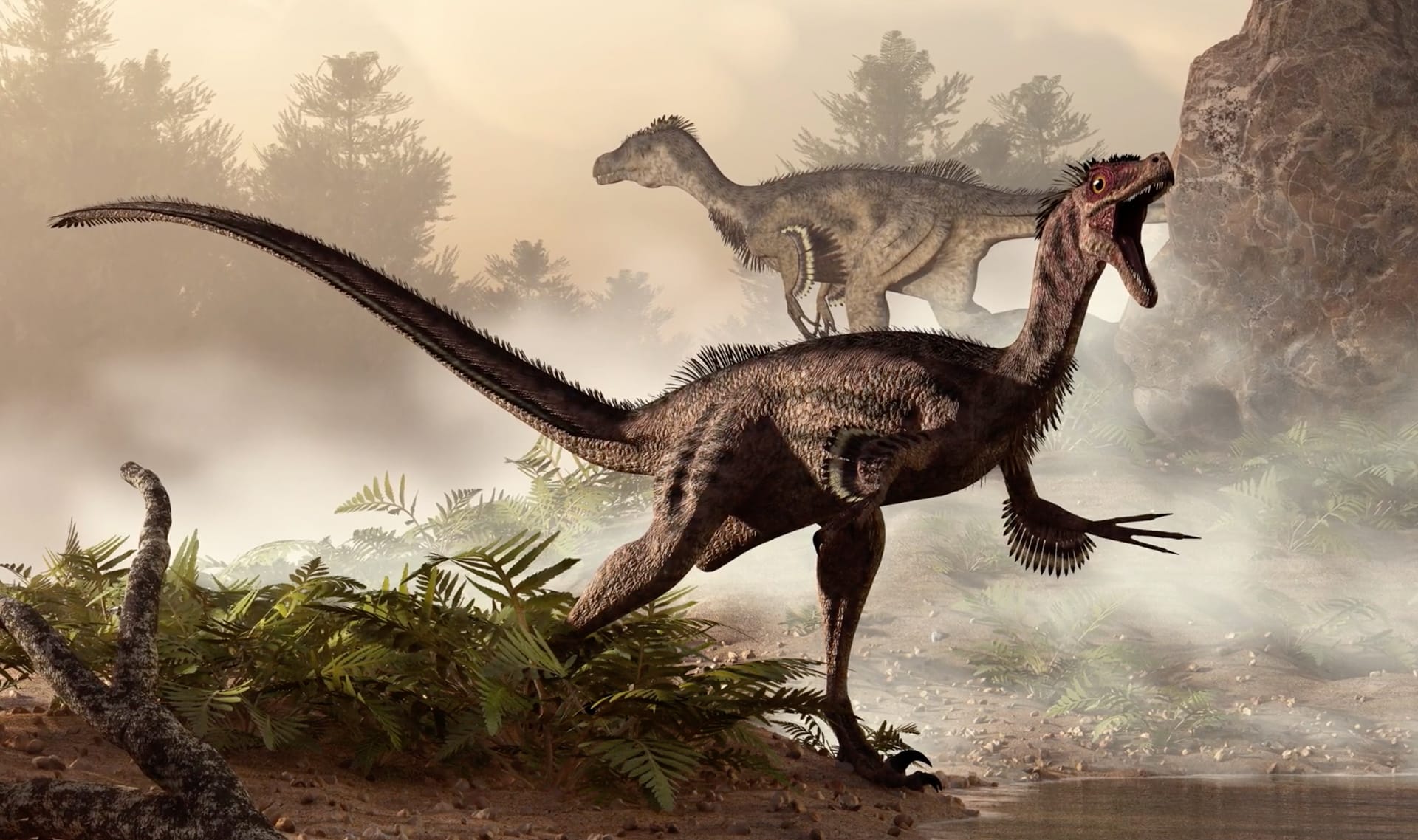
dinosaurio
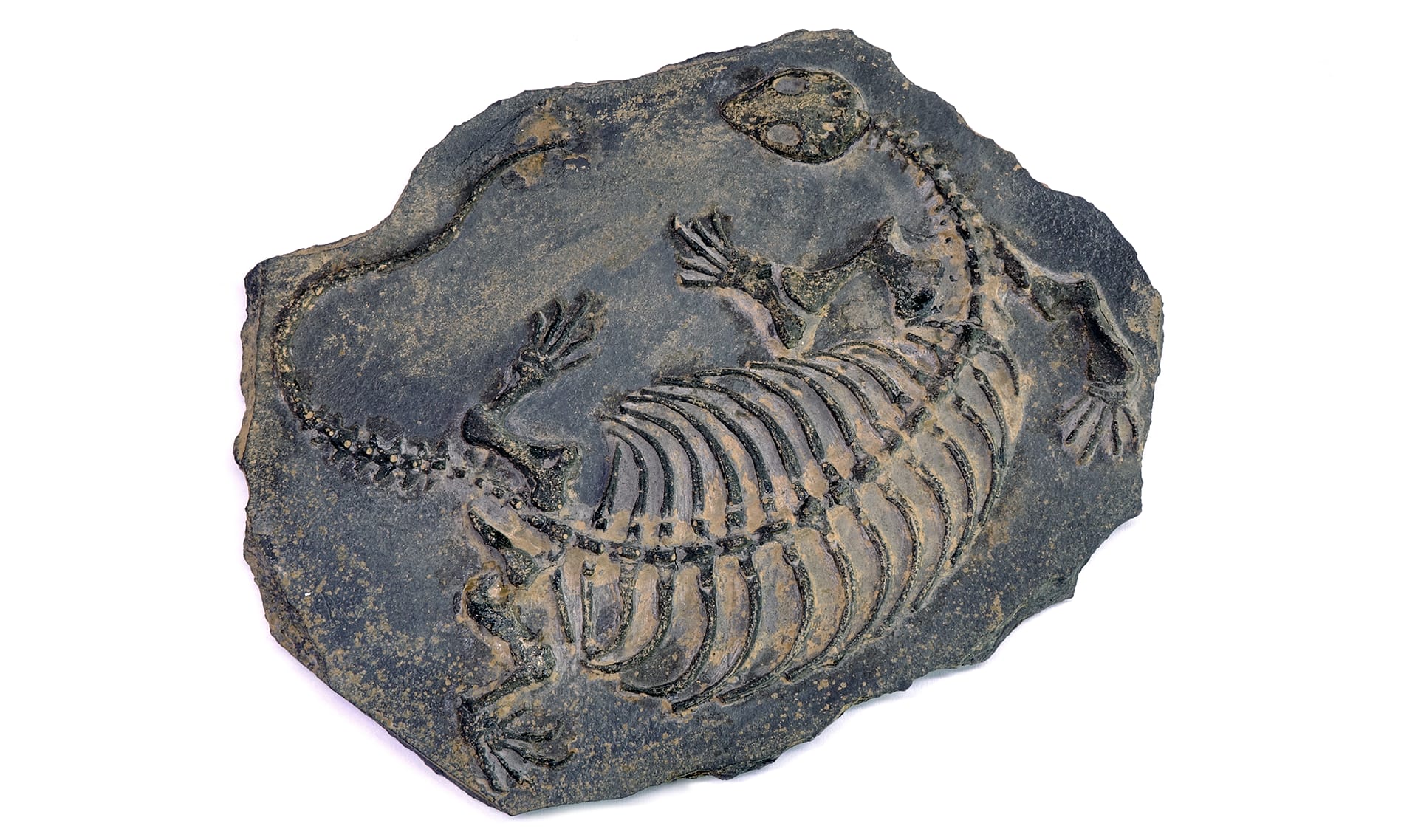
fósil
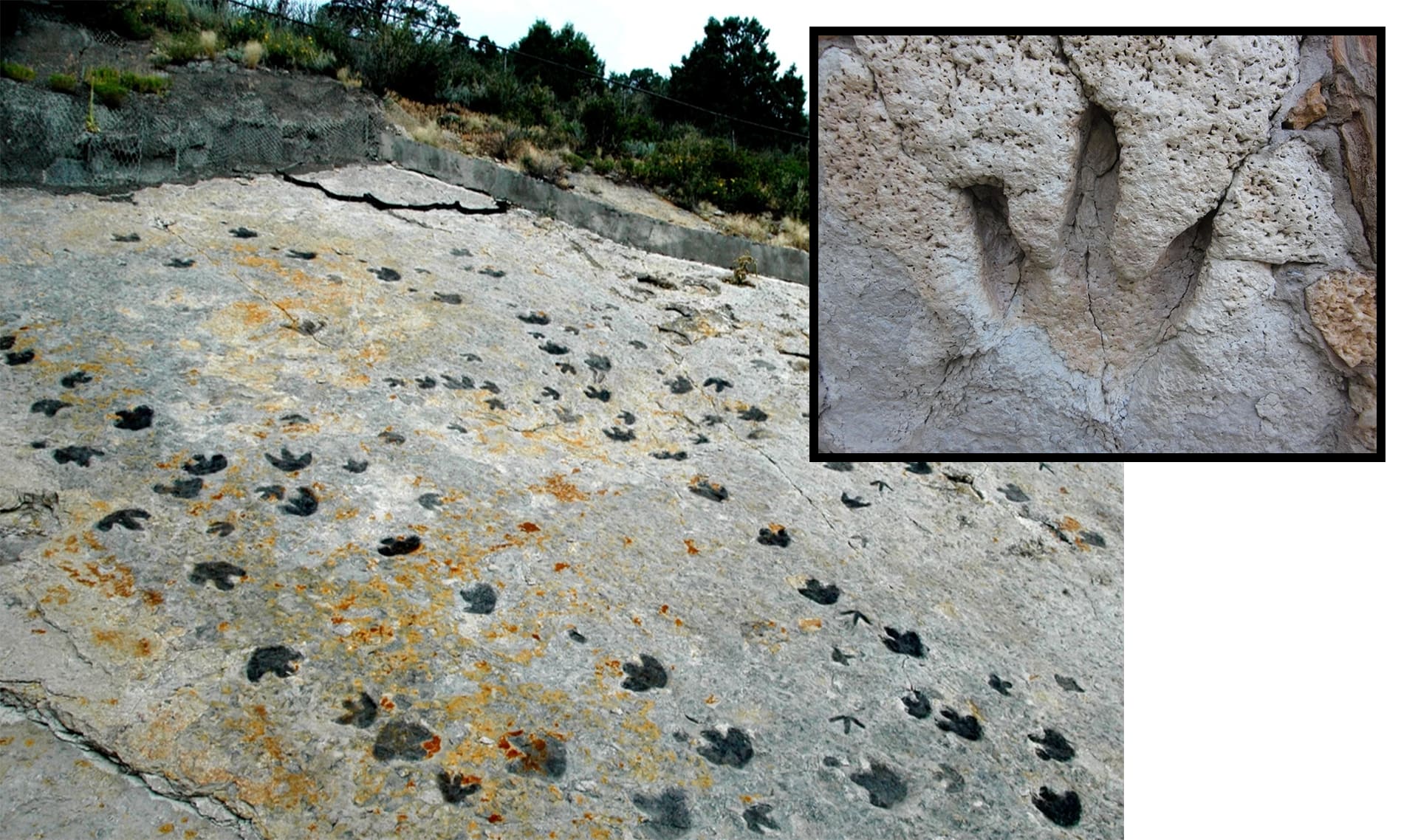
icnofósil

medir

